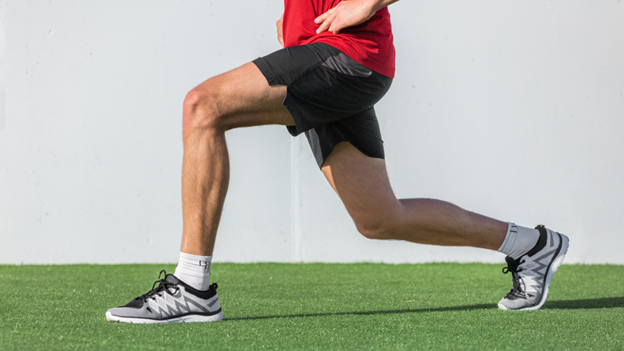
From strain to solution: what is a pulled groin?
Pulled groins are an ailment that can catch us off guard when we least expect it. Whether you're an active athlete, a fitness enthusiast, or just going about your daily routine, a pulled groin can cause discomfort and inconvenience.
But don't worry – understanding the ins and outs of this condition can lead us on a path from strain to solution, helping us recover swiftly and get back to doing the things we love.
Pulled groin: what it means
In simple terms, a pulled groin refers to a strain or injury to the inner thigh muscles, specifically the adductor muscles. These hard-working muscles play a crucial role in stabilizing our legs and are heavily involved in movements like walking, running, and jumping.
When these muscles are subjected to excessive stress or sudden movements beyond their capacity, they can become overstretched or even tear, causing a pulled groin.
Causes of groin pain
When it comes to groin pain, various culprits can sneak into the picture. Let's highlight the possible reasons behind that unwelcome groin pain.
- Physical strain. Activities like sprinting, kicking, or making rapid changes in direction during sports can strain these muscles and lead to a pulled groin.
- Sports injuries. Sports that involve twisting, turning, or jumping, such as soccer, basketball, or ice hockey, can increase the risk of straining the groin muscles.
- Lack of warm-up. Skipping a proper warm-up before engaging in physical activities can be a recipe for disaster. Without adequately preparing our muscles, they are more susceptible to injury, including a pulled groin.
- Muscle imbalance. A muscular imbalance, where certain muscle groups are stronger or tighter than others, can create added stress on the adductor muscles. This imbalance might arise from poor posture or improper training techniques and neglecting to stretch or focus on flexibility.
- Age and physical condition. As we age, our muscles may lose some of their elasticity and become more prone to injuries. Additionally, individuals who are not regularly active or have weakened muscles may be more likely to experience groin strains.
- Sudden movements. Sometimes, a pulled groin can result from seemingly innocent actions, like slipping on a wet surface or stepping awkwardly off a curb. These unexpected movements can still place strain on the groin muscles.
Remember, identifying the cause of your groin pain is crucial in determining the most effective course of action for recovery. It's always wise to seek professional medical advice to receive an accurate diagnosis and personalized treatment plan at your local CityMD clinic.
How to treat a pulled groin
You've got a pulled groin, and it's putting a temporary halt to your usual activities. But don't worry, there are ways to ease the discomfort and get you back on your feet.
Let's dive into some effective methods to help you bid farewell to that nagging groin pain.
- Rest and ice. When you suspect a pulled groin, give your body a break. Applying ice to the affected area for 15-20 minutes every few hours can help reduce swelling and soothe the pain.
- Compression. An elastic bandage or compression shorts can support the injured area and aid in reducing inflammation.
- Elevation. Elevating your leg can help improve blood circulation and minimize swelling. Prop your leg up on a cushion or pillow whenever you can.
- Pain relief. Over-the-counter pain relievers like ibuprofen or acetaminophen can help alleviate discomfort.
- Gentle stretches. Gentle stretching exercises can help improve flexibility and prevent muscle stiffness. Be sure to perform these stretches carefully and stop immediately if you experience any pain.
- Physical therapy. Physical therapists can design a tailored rehabilitation program to strengthen the adductor muscles and aid in a safe return to regular activities.
- Heat therapy. You can introduce heat therapy to the area using warm compresses or a heating pad. This can promote blood flow and help relax the muscles.
- Gradual return to activities. It's essential to ease back into your regular activities gradually. Rushing the process can lead to re-injury.
Treating a pulled groin at CityMD
CityMD urgent care is here to support you in treating pulled groin symptoms. Walk in for immediate evaluation and diagnosis, no appointment is necessary.
Remember, rest, ice, compression, and gentle stretches are key to recovery. With the proper attention and care, most patients are back to their usual activities and pain-free in very little time.

We’re ready to care for you.
Visit any CityMD urgent care location in your community today for an evaluation with one of our expert providers.